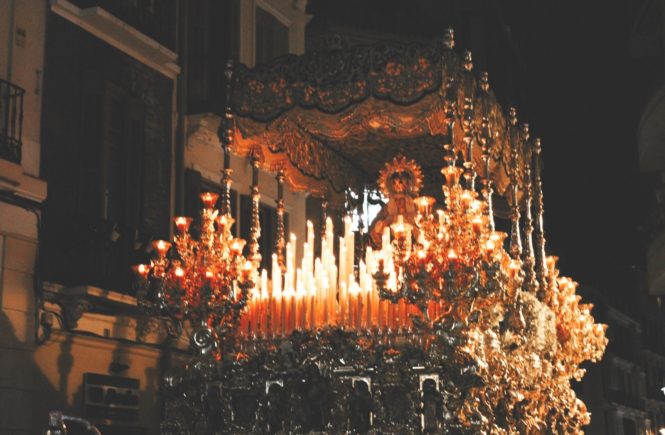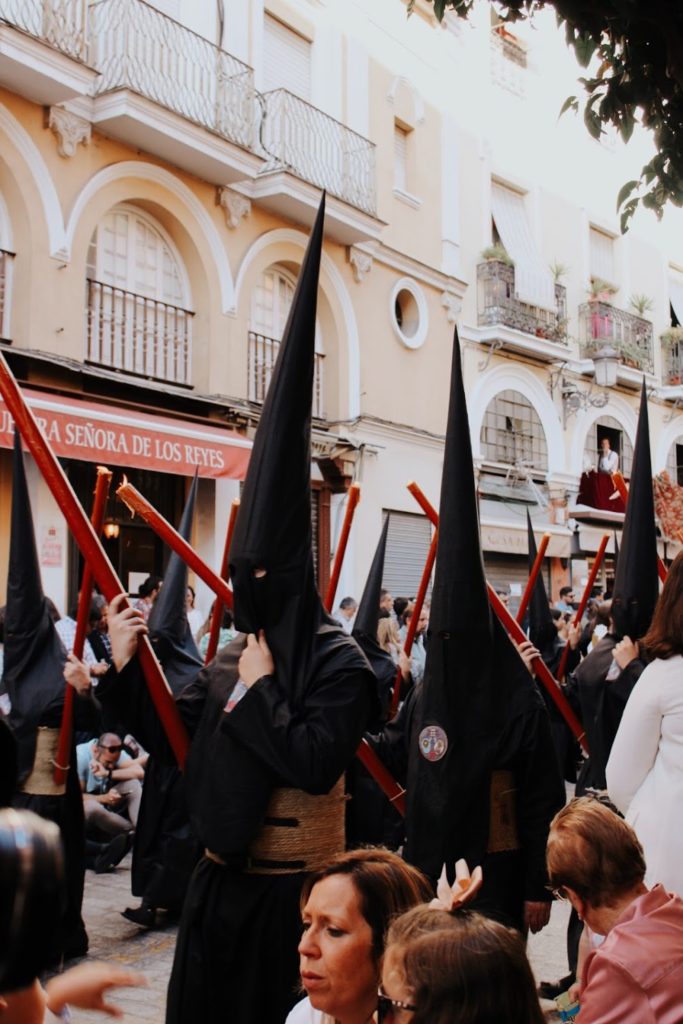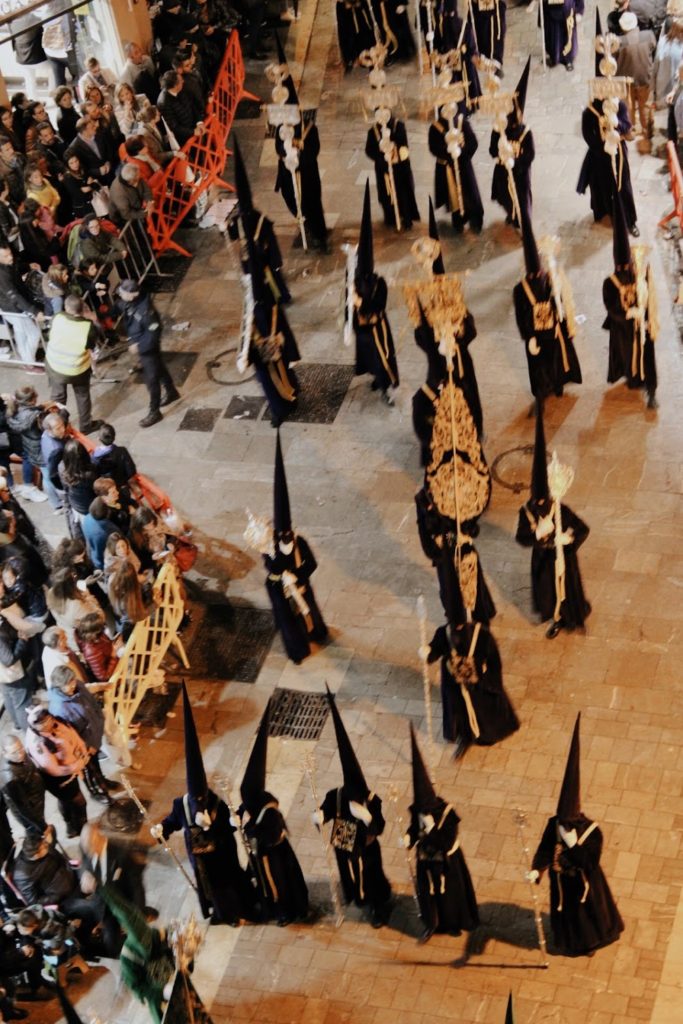Occasionally I will link to products or tours through affiliate links. At no additional cost to you, I may earn a small commission through your purchase, but I only recommend things I would use myself or recommend to my besties!
One of the most amazing things about traveling is being able to get outside of your comfort zone and experience life from within another culture. All countries have their own traditions that can give you a glimpse into their culture.
America has Thanksgiving, Ireland has St. Patrick’s Day, and Germany has Oktoberfest. And, I’ve of course made sure to celebrate all of them! But, have you ever heard of Semana Santa or Holy Week in Spain? I hadn’t until AFTER I booked my bucket list dream trip around Spain, and BOY was it a cultural experience!
What is Holy Week?
Holy Week (called Semana Santa in Spain) is celebrated the week before Easter throughout towns in Spain. It is the week from Palm Sunday through Easter Sunday. Each town has a number of brotherhoods that contain hundreds to thousands of members, with the largest being in Seville and Malaga.
During Holy Week, each brotherhood marches in a scheduled procession from their local church to the city cathedral and back. Each procession has a pre-planned route and can take HOURS to move through the city. Some of the longest can be up to 13 hours during the ‘La Madrugada’ of Good Friday which is during the early morning (think 3/4am)!!
Each procession has a marching band and members wearing traditional
‘capirotes’, which are conical shaped hoods in various colors. Every brotherhood also maintains two “tronos” or thrones throughout the year, which typically depict Jesus and the Virgin Mary, and are carried in the procession. These thrones are HEAVY and need scores of men working in unison to carry them throughout the procession route. Some of them are as big as 5 tons!!
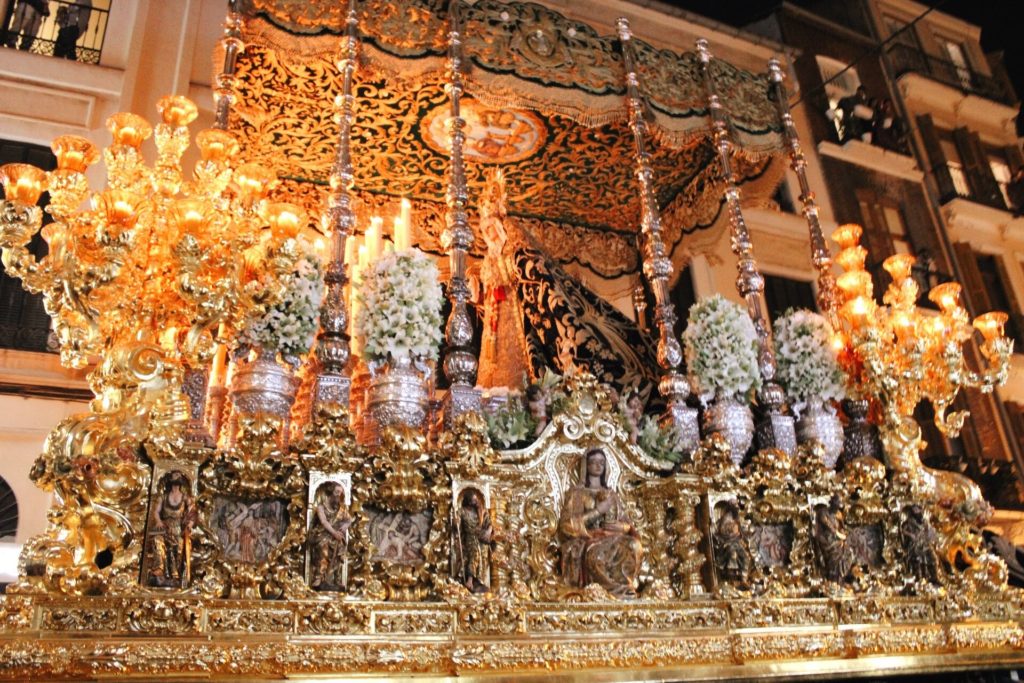
Part of the reason these processions take so long is due to the carrying of the thrones. The men carrying them need breaks every 1-2 minutes. They communicate these breaks by ringing a bell on the front of the throne. They ring a chain of bells along the entire procession to communicate when to stop and go. It’s impressively coordinated!
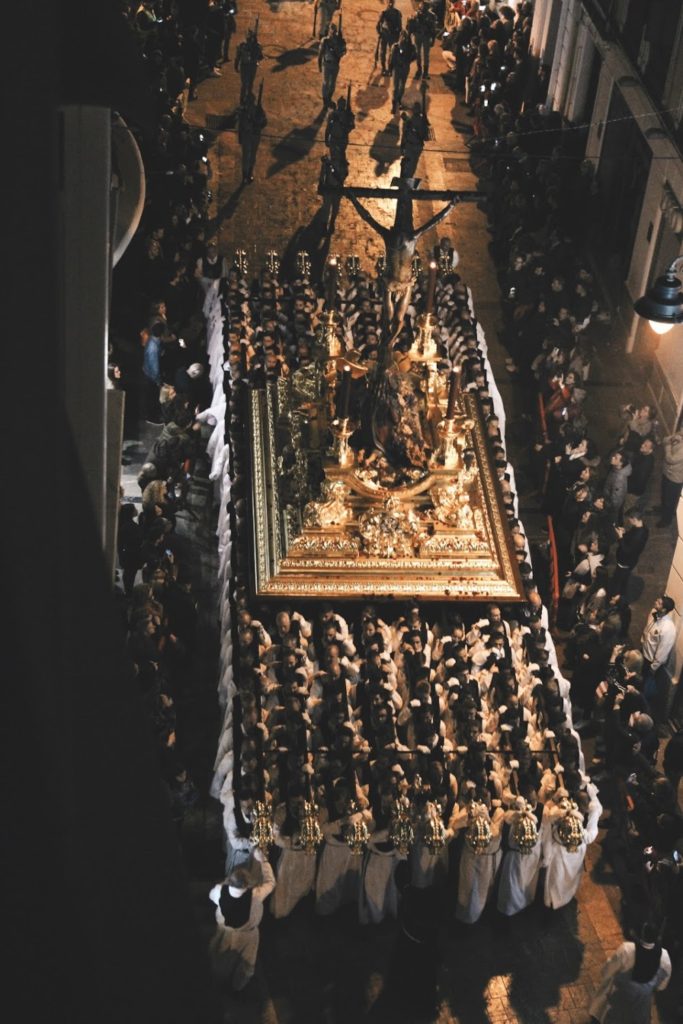
If you have never experienced or heard of Holy Week, these processions can seem a bit eerie, and maybe even a bit intimidating and scary. In reality, many of the locals aren’t even members of the church. They attend because of the long standing tradition and to see the beautiful thrones carried by each brotherhood. As an outsider, these processions are one of the most beautiful events I’ve ever had the opportunity to experience.
What should I expect?
Most cities in Spain celebrate Holy Week in some way, shape, or form. The largest celebrations are in Seville and Malaga. Here is a great post about what to expect across different cities: Top Cities to Experience Semana Santa in Spain
Most processions don’t start until around 3 or 4 pm each day. If you do want to do some sightseeing, I STRONGLY recommend doing this during the first half of the day. That way, you can fit in all the touristy things you want to do and also experience Holy Week.
Once the processions start, you can try to avoid the processions by staying outside of the routes. I’ll tell you now, it’s pretty much impossible unless you stay away from the town center completely. Be sure to go to the tourist office and get a map of all the procession routes. It will be your bible for the week (pun intended). Instead of avoiding, I’d recommend just trying to embrace the culture! Find a bar, have some wine and tapas, move on and find a spot to watch a bit of the processions… then head to another bar!
Tips on surviving Holy Week in Seville:
- BE RESPECTFUL – This holiday is part of the Spanish culture. Take it in, experience it, but be respectful of it.
- EMBRACE IT – You can try to avoid the processions and the people, or you can just accept that you’ll probably have a late night having the most unique cultural experience that not many people get to see.
- GET A MAP – The bigger cities should have maps with schedules available so you know where each brotherhood will be each day and around what time. These maps were life SAVERS when we were trying to move around the city.
- TAKE A NAP – Yes, you will be up very late, so you might as well do as the Spanish do and SIESTA (my favorite Spanish tradition obviously).
- DRESS THE PART – Seville hosts the most formal of the celebrations, many people dress for a typical Sunday Mass. Men wear nice slacks, button downs, and bow ties, and women wear nice dresses or jumpsuits. Other cities are a bit more casual, so you could probably get away with tasteful vacation wear.
For more information on your Sevillian Semana Santa, check out
Devour Food Tour’s Insider’s Tips for Semana Santa in Seville.
If you want to see some videos of an ACTUAL procession, head to my instagram @fromhometohere. Take a look at my Semana Santa story!


